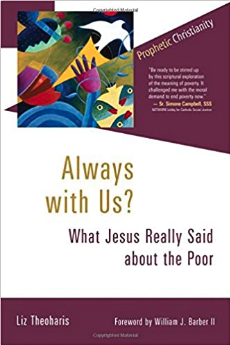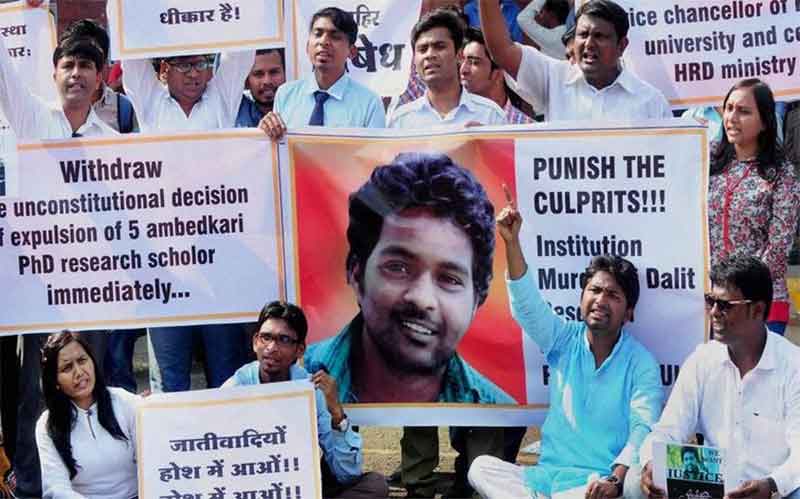One hundred and fifty years ago, in the bloody wake of the Civil War, the abolitionist Julia Ward Howe issued a “Mother’s Day Proclamation.” The world, she wrote, could no longer bear such terrible violence and death. She called on women across the country to “rise up through the ashes and devastation” and come together in the cause of peace. Forty years later, her daughter Anna Jarvis created Mother’s Day.
In the midst of another national trauma, with the latest Mother’s Day just past, perhaps it’s an auspicious moment to celebrate not just mothers, but women more generally. I think about countless women like my mom (who died nearly a year ago) enduring tremendous adversity to make ends meet and care for those they love. During the pandemic, after all, women have found themselves on the front lines in so many ways. They make up more than 75% of healthcare workers, almost 80% of frontline social workers, and more than 70% of government and community-based service workers. Add in one more thing: women have been hit first and worst by the economic crisis that Covid-19 set off, as female-dominated industries like retail, leisure, and hospitality were decimated.
The situation continues to be so dire for women that economists have even begun to talk about a “shecession.” A recent poll found that a quarter of women claimed they were financially worse off a year into the pandemic. In March, the percentage of women out of, or looking for, work was the highest it’s been since December 1988. For the first time in American history, job and income losses in an economic crisis have been worse for women than for men. And it’s been poorer women and women of color who have been hit hardest of all.
But the true depth of this crisis can’t be measured by job numbers and frontline risks alone. In an intensified yet eerily familiar way, this past year-plus has laid bare the pressures, burdens, and violence that women, especially poor women and women of color, face every day. It’s highlighted the disproportionate, unpaid labor they shoulder at home; the role they take in raising and educating children while caring for the sick and elderly; and the paternalistic, often punitive, presence of welfare and law enforcement agencies like Child Protective Services, the police, and U.S. Immigration and Customs Enforcement (ICE) agents in their lives.
In such a moment, we should all think about the opening words of Howe’s 150-year-old proclamation: “Arise, then, women of this day! Arise, all women who have hearts, whether our baptism be that of water or of tears!”
Of Water and Tears
Before slavery was outlawed in America, formerly enslaved abolitionist leader Frederick Douglass insisted that those who feel the first pains of injustice must be the first to strike out against it. That was the very kind of “baptism” Howe invoked in her proclamation — an invitation to initiate women into struggles born from those already so much a part of their lives. Today, her invocation of “water and tears” should resonate for millions. Among them, it may have no greater relevance than for the women of the Michigan cities of Flint and Detroit.
April 25th marked the seventh anniversary of the ongoing water crisis in Flint. Many will remember the breaking news coverage about the lead poisoning of that city’s water system at the end of 2015. Others will recall President Barack Obama’s “mission accomplished” moment when he visited Flint and drank a cup of newly filtered tap water. But for the many women, poor and largely of color, who have become Flint’s “water protectors,” the crisis isn’t over. Even now, new water lines are still needed in some neighborhoods. A $641 million class-action settlement fund from lawsuits against the state of Michigan has indeed recently been set up for Flint residents, particularly impacted children, to receive help. However, community leaders are continuing to organize, because unfortunately many of the families and children who need the resources the most will be left out since the settlement requires documentation, which the poorest and most vulnerable families will struggle to obtain.
It’s important to note that the struggle of these warriors for clean water did not begin when the first cameras arrived in Flint to record the disaster. It began when, in 2011, Michigan Governor Rick Snyder appointed an unelected emergency manager to rule the city with near-dictatorial powers.
A similar emergency manager had already imposed mass water shutoffs in Detroit after that city went bankrupt, while the one in Flint switched from piping in well-treated water from Detroit to pumping water directly out of the Flint River, which had been an unofficial waste-disposal site for local industry for decades. It was seen as a cost-saving measure for that financially strapped city until a new water-piping system could be built. Warnings and safety precautions were ignored when it came to lead and other pollutants ending up in local drinking water, a decision that would, in the end, condemn Flint’s inhabitants to years of mass lead poisoning. Because of that same tainted water, more than 100 people would also die of Legionnaires’ disease.
We’re talking about a place that had once been a beacon of industry and prosperity, a city now struggling under the weight of deindustrialization and growing poverty. Claire McClinton, a long-time Flint community organizer and leader, summed up the crisis this way: “They could not have taken our water away without taking our democracy first.”
Her words are informed as much by history as by contemporary events. McClinton and many of the other women fighting for clean water had already spent decades organizing for a broad range of welfare, labor, and economic rights. She and many of those other Michigan water warriors are my political mothers and mentors. No wonder I once again celebrated them (as well as my own mom) this Mother’s Day.
Even earlier, in 1996, during the heyday of neoliberal austerity politics, welfare-rights and labor activists like those in Flint and Detroit witnessed Democratic President Bill Clinton eliminate the entitlement of millions to welfare and better living standards of millions by signing into law the Personal Responsibility and Work Opportunity Reconciliation Act. Among its other “reforms,” it replaced Aid to Families with Dependent Children, a program which provided desperately needy children with welfare payments, with the far more restrictive Temporary Assistance for Needy Families. They watched as government agencies kicked staggering numbers of people off life-saving federal assistance programs and continued to forcibly rip kids away from parents who, in terrible economic circumstances, could no longer afford to feed and house their own families adequately.
As the situation in Flint made clear, the historic fight for welfare was integrally connected to the ongoing fight for clean and affordable water, as well as, in our present moment in thousands of communities, the fight for living wages and voting rights. And don’t forget the need for a revival of an increasingly impoverished, not to say (in the wake of Donald Trump) ravaged, democracy.
Indeed, all these issues raise questions about the role the government should play in caring for people and addressing fundamental fractures in society like poverty, hunger, and sickness, which always disproportionately hurt women. All of these are, then — or at least should be — non-negotiable issues for women today.
Lifting from the Bottom Up
The first 100 days of the administration of Joe Biden and Kamala Harris have clearly represented a surprising pivot from neoliberalism’s halcyon days under Clinton. For an anti-poverty organizer like myself, schooled in the politics of the 1990s and early 2000s, it was startling, even moving, to watch Biden address a joint session of Congress and announce that “trickle-down economics has never worked. It’s time to grow the economy from the bottom up and middle-out… We have a real chance to root out systemic racism that plagues American life… A chance to deliver real equity. Good jobs and good schools. Affordable housing. Clear air and clean water.”
Without a doubt, one of the administration’s biggest achievements so far is the American Rescue Plan Act (ARPA), a $1.9-trillion relief package that has already begun to inject desperately needed resources into a needy America. Included in it was the Child Tax Credit (CTC), a potentially breakthrough anti-poverty program.
The CTC could be transformative for millions of poor families, especially if it were to be expanded and made permanent. For some observers, it may seem like a good idea conceived by policy experts for a critical but passing moment of national need. Dig a little deeper, though, and what you’ll find is that the CTC is an inheritance from the efforts of poor women over these last decades, especially those of the National Welfare Rights Organization (NWRO) in the 1960s and 1970s, some of whom are still organizing in Flint and Detroit.
The NWRO was a national organization of poor women on welfare, Black and white alike, at a time when more than eight million single women and their children received regular but meager benefits through the Aid to Families with Dependent Children program. NWRO leaders, however, saw such welfare not as a form of charity, but as a right. They insisted on the dignity of all work, whether in traditional jobs or at home, and the need to compensate all women for their labor. They championed a welfare system that wouldn’t separate the “deserving” from “undeserving” poor but instead put agency and power in the hands of welfare recipients rather than bureaucrats and social workers.
As it grew, their organizing coalesced around a demand for a guaranteed adequate annual income — and, in the late 1960s, they would prove a force to be reckoned with, recruiting leaders like Reverend Martin Luther King, Jr., to their cause. Their political imaginations were decades ahead of their time and their moral clarity on the position of poor women in this society prophetically advanced.
In 1972, Johnnie Tillmon, the first chairwoman of the NWRO, published a paradigm-shifting essay entitled “Welfare is a Women’s Issue,” in which she wrote:
“I’m a woman. I’m a black woman. I’m a poor woman. I’m a fat woman. I’m a middle-aged woman. And I’m on welfare. In this country, if you’re any of those things you count less as a human being. If you’re all of those things, you don’t count at all.”
Nearly half a century later, as we pause to honor mothers, isn’t it time to recognize the ways women like Johnnie Tillmon have for all too long been discarded by this society? Isn’t it time to be honest about those men — and women — who have risen to great heights, only to wield power in ways that hurt women? As for me, I can’t forget the moment when, during the fight over ARPA, Arizona Senator Krysten Sinema, a Democrat, made a show of walking past the Senate clerk’s desk, giving an exaggerated thumbs down to an amendment to the bill that would have raised the minimum wage to $15 an hour.
When a reporter from the Huffington Post inquired about her vote, the senator’s spokesperson claimed that it was sexist to comment on a female politician’s “body language” or “physical demeanor.” Much more harmful to women, though, is the disproportionate impact of poverty and low wages on their families and them.
Sinema represents a state in which nearly three million people are poor or one emergency away from economic ruin, a majority of them women. It’s troubling, then, that a woman who has reportedly experienced poverty herself (although questions have been raised about whether she has exaggerated how poor she was) would deny living wages to poor and low-income women in her state and across the country. Among the Democrats in the Senate joining Sinema in dissent were New Hampshire’s Maggie Hassan and Jeanne Shaheen, as well as five male senators. (All seven of them are millionaires.) Their actions are a stark reminder that women need genuine representation in Congress, as well as policies that lift us all.
Sadly, that “Nay” vote against including a minimum wage raise in the Covid-19 relief package hurt women, people of color, and the poor. Altogether, 59% of low-wage workers are women and nearly 40% of all Black workers labor for less than $15 an hour. Yes, during the pandemic, we’ve begun calling many low-wage workers “essential.” It turns out, though, that they aren’t essential enough to be guaranteed wages that might help them afford the essentials of life.
Now, Sinema is also at the center of another legislative battle — about the future of the filibuster, a racist relic of the slavery and then Jim Crow eras that still has democracy in chains. It continues to prove a powerful cudgel for extremists in the Republican Party who are increasingly unable to win a governing majority fairly. It’s especially useful for those determined to stonewall on a host of policies that disproportionately impact women, from wage increases to welfare programs and reproductive rights. Sadly, despite claiming to care about sexism and the fortunes of women, Sinema continues to help hold the Senate hostage to score political points.
Arise Women of This Day
As a white woman — a mother, a pastor, a feminist, an activist, a teacher, and the co-chair of the Poor People’s Campaign: A National Call for Moral Revival — I feel obliged to challenge Senator Sinema: for her performance on the Senate floor, for her stance against living wages and for the filibuster, and for the long-term impact her actions will have on the 140 million poor and low-income people in this country, especially the 74 million poor and low-income women.
I also feel honored and obliged to uphold the work of women like Claire McClinton, Johnnie Tillmon, and Julia Ward Howe who have allowed us glimpses of what a government and economy that served and empowered all women could look like and who have highlighted the prophetic leadership of women impacted by the social injustices of their day. Now is the time to raise wages, ensure vaccine equity, and so much more. Now is the time to lift from the bottom so that all of society can rise, as poor people have been saying for years and President Biden has recently reaffirmed.
Tillmon couldn’t have made it clearer for us. “Women’s liberation,” she said so many years ago, “is simple. No woman in this country can feel dignified, no woman can be liberated, until all women get off their knees.”
Today, let’s hear her and arise together! In truth, every day should be Mother’s Day.
Follow TomDispatch on Twitter and join us on Facebook. Check out the newest Dispatch Books, John Feffer’s new dystopian novel Frostlands (the second in the Splinterlands series), Beverly Gologorsky’s novel Every Body Has a Story, and Tom Engelhardt’s A Nation Unmade by War, as well as Alfred McCoy’s In the Shadows of the American Century: The Rise and Decline of U.S. Global Power and John Dower’s The Violent American Century: War and Terror Since World War II.












































